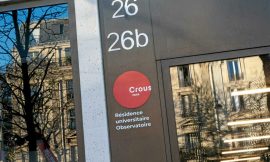From Wednesday, September 20th to Sunday, September 24th, it’s the Garden Festival! A rich program awaits you in your favorite green spaces. An opportunity to reveal some secrets or unusual stories that also contribute to the richness of these places. Follow us, we’ll tell you…
A Picasso stolen in a square in the 6th… and found in a town hall! Perhaps you’ve come across it? And even recognized it (there, you’re clever): the bronze bust representing the painter and photographer Dora Maar, installed in the Laurent-Prache square in the 6th. Picasso himself sculpted the head of the woman who was his companion and muse, a work dedicated to his friend Guillaume Apollinaire. In 1959, the artist offered it to the City of Paris. Up until then, nothing very secret, except… On March 31st, 1999, shock: the statue disappeared. The police still wonder how this 80-kilogram work could have been stolen without anyone noticing. All the searches were in vain, but in 2000, the statue reappeared, and in a rather unexpected place: in the town hall of Osny (Val-d’Oise)! A Picasso specialist formally identified it. The mayor, who did not recognize it, pleaded good faith: the statue had been entrusted to him by the municipal police who had found it in a ditch near the Château d’Osny. Without knowing exactly what they were dealing with… In 2001, the City of Paris recovered its property and excused the mayor of Osny, who was unwittingly guilty of concealment. The bust of Dora Maar was reinstalled a few months later in its square after restoration.
In the Jardin des Plantes, seeds are placed under high surveillance… In the Jardin des Plantes (5th), a secret place (at least with very restricted access…) houses one of the most beautiful collections of fruits and seeds in France and Europe. Started in 1840, the seed bank of the National Museum of Natural History, better known as the graineterie, consists of more than 25,000 samples. The graineterie services work in collaboration with customs, the police, and the poison control center to identify seed lots.
… but the Parc de Bercy has a public seed library. Just like a library box, imagine being able to give or retrieve seeds of future plants that will brighten up your balcony or garden, if you’re lucky enough to have one. With the seed library at the Maison du jardinage in Parc de Bercy (12th), your dream comes true. Attached to the door of the house, a shelving unit offers different well-labeled seed packets. These are not store-bought seeds, but ones that come from passionate gardening individuals. In September (the selection changes depending on donations), you can find lettuce, pumpkin, hollyhock, or columbine seeds. The principle is based on sharing: you come with your own packet and take one in exchange. This rather confidential tip (not for much longer…) can be found at the Maison du jardinage reception and is available during the Maison’s opening hours (to be consulted here). You will be welcomed and everything will be explained to you! The full program of activities, walks, meetings, and discoveries can be found at the event page.
The Maison de Balzac, its garden, and its secret door… The Maison de Balzac is not only the authentic house of the author of La Comédie Humaine, which has become a museum. Its visit is also worth it for its faithful reconstitution of the rooms, especially the office where the writer wrote thousands of pages, or to admire the bust of the author created by Rodin. But you should also come here to enjoy its magnificent shady garden with its breathtaking view of the Eiffel Tower. And while you’re at it, try to find the secret door through which the often broke writer could escape his creditors, unnoticed. We’ll let you find it…
The expression “à midi pétante” was born in the gardens of the Palais Royal. “Rendez-vous à midi pétante!” You’ve already heard this expression, but do you know where it comes from? We have to go back to 1786 and transport ourselves to the heart of the gardens of the Palais Royal to find its origin and understand its meaning. At that time, the time was read on sundials installed in well-exposed streets. The dial in the Palais Royal neighborhood was very popular and attracted crowds. Seeing this, a neighboring clockmaker decided to install one of his inventions in the center of the garden. He fixed a small black powder-filled cannon on a stone base, topped with a magnifying glass. When the sun reaches its zenith at noon, the concentration of its scorching rays through the glass causes the fuse to ignite and triggers the mechanism. And boom! It’s exactly noon! Stolen in 1998, the device was reinstalled in 2004 by the National Monuments Center, but without the magnifying glass. While the cannon still booms, it is now manually triggered on a few Wednesdays each month and in sunny weather. At noon, therefore.
“Impatiente ne-me-touchez pas!” snake in the Auteuil Greenhouses… curious requests received by the Cinema Mission. “Impatiente ne-me-touchez pas!” Beneath this strange warning lies the touch-me-not (Impatiens noli-tangere), a surprising herbaceous plant. It owes its name to the strong reactivity of its fruit to touch. When it is ripe, if you grab it, its capsule will explode and can project its seeds a few meters away. It can be seen in July and August during its flowering in the unusual garden of the Parc Floral. The Paris Cinema Mission tells the story of how this plant was sought after by a film crew for a documentary comparing sporting performances to those of certain plants. Another unusual request received by the Cinema Mission: an individual asked to photograph his… pet snake in the Auteuil Greenhouses! Certainly, we can understand that he was attracted by the superb collections of rare plants that fill the splendid greenhouses. But this time, it should be noted, this request was not accepted.
Some parks transport us to the Alps or the south of France. The gardeners of the Parc Floral, who have already created exceptional landscapes, have taken on a new challenge: creating an alpine plant garden. A sometimes bewildering cultivation, especially on flat land… The search for seeds was carried out with the alpine gardens of France, and some rocks were brought back from the Pyrenees. You can walk through the Pyrenean beech-fir forest, encounter the whitebeam or the Caucasian fir… All on a slope from low to high that does not exceed three meters… a successful challenge for the park’s gardeners. To visit it, we’ll guide you! Head west of Paris, to the Bagatelle garden, to feel like you’re in the south this time. The storm of 1999 did not spare the garden: 300 trees were uprooted. In 2000, the gardeners decided to create a Mediterranean-themed garden with typical plants from the south: Balearic boxwood, heather shrubs, judas trees, Mediterranean privets, and holm oaks. The atmosphere here is very different from the rest of Bagatelle. Here, the spirit is freer, as is the work of the gardeners who, year after year, shape the different flowerbeds according to their adaptation. Without a doubt, it feels like the South.
The Coulée Verte offers a view of a work by Michelangelo (or almost). Sometimes aerial, sometimes underground, the Coul



